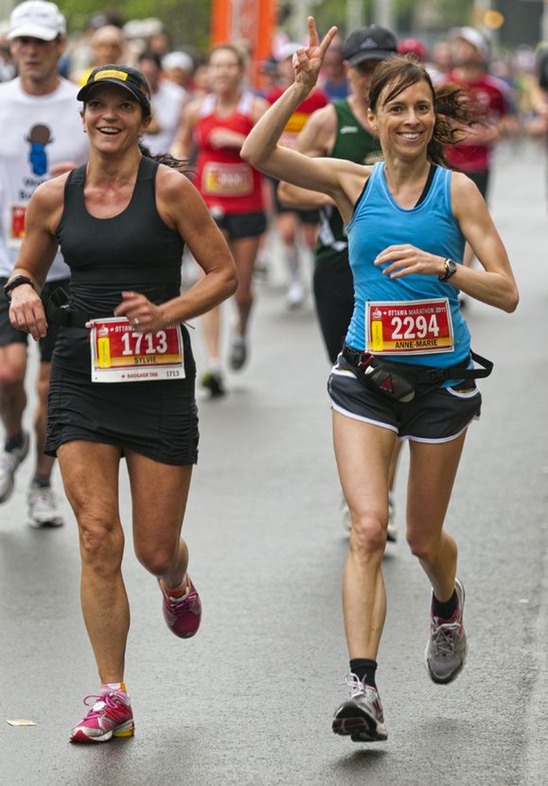
Konur fengu ekki að keppa í maraþonhlaupi á ólympíuleikum fyrr en árið 1984. Leikarnir fóru þá fram í Los Angeles.
Fram að 1960 var lengsta hlaup sem konur fengu að taka þátt í á ólympíyleikum 800 metrar. Lengi vel var talið að lengri hlaup væru skaðleg fyrir konur og að líkami þeirra væri ekki gerður fyrir langhlaup.
Sigurvegari í í fyrsta maraþonhlaupi kvenna í Los Angeles 1984 var Bandaríkjakonan Joan Benoit, hún var þá 27 ára gömul. Tími hennnar var 02:24:52. Sá tími hefði dugað til að sigra í 11 af 20 maraþonhlaupum karla á fyrri ólympíuleikum.
Saga Joan Benoit er ekki síður merkileg fyrir þær sakir að hún meiddist illa a hné þegar hún keppti í 20 mílna hlaupi skömmu fyrir inntökumótið fyrir leikana í Los Angeles (United States Olympic Women's Marathon Trials). Hún gekkst undir aðgerð á hné með speglunartækni 17 dögum fyrir inntökumótið. Bati hennar var skjótur og hún náði að sigra hlaupið. Þremur mánuðum síðar sigraði hún fyrsta maraþonhlauop kvenna á ólympíuleikum.
Baráttan fyrir því að konur fengju að keppa í langhlaupum á ólympíuleikum og öðrum stórmótum hafði staðið lengi. Roberta Gibb varð fræg þegar hún faldi sig á bak við runna þegar ræst var í Boston maraþonhlaupið árið 1966. Hún hljóp síðan af stað með öllum körlunum og kláraði hlaupið á tímanum 03:21:25. Tíminn fékkst reyndar ekki formlega viðurkenndur.
Roberta Gibb lýsir reynslu sinni svona:
"I took the bus back from San Diego, curled up in the seat for three nights and four days, eating only a bag of apples and bus station chili and arrived the day before the race at my parents’ house in Winchester. I ate a huge roast beef dinner and apple pie. The next day my mother drove me to the start in Hopkinton and dropped me off. I ran up and down a couple of miles to warm up, and then I hid in the bushes near the start.
When the gun went off I jumped into the pack. I had no idea what kind of reception I’d get. I was afraid the police would arrest me and that the spectators might boo and hiss. I was afraid that if the officials saw I was a woman they’d throw me out. I was all alone. I knew the most important thing was to prevent anyone from stopping me, so I wore a blue sweatshirt with the hood pulled up and my brother’s Bermuda shorts tied up with a string, over my black, tank-topped bathing suit.
Very quickly, the men behind me, studying my anatomy, figured out that I was a woman, and to my great relief, they were supportive and friendly. They could have shouldered me off the course, but instead they said, “It’s a free road. We won’t let anyone throw you out.” So contrary to what some people think, it was not a men-versus-women confrontation. The men were glad that I was running. With this encouragement, I took off the hot, heavy sweatshirt, and then everyone could see that I was a woman. A cheer went up from the crowd when they saw a woman was running."
Þær eru margar hetjurnar.





